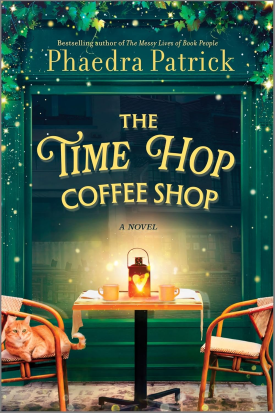Oscar Wilde Books In Order
Book links take you to Amazon. As an Amazon Associate I earn money from qualifying purchases.Publication Order of Standalone Novels
| The Canterville Ghost | (1887) | Description / Buy at Amazon |
| The Picture of Dorian Gray | (1891) | Description / Buy at Amazon |
| Teleny, or The Reverse of the Medal | (1893) | Description / Buy at Amazon |
| The Portrait of Mr. W. H. | (1904) | Description / Buy at Amazon |
Publication Order of Short Stories/Novellas
| The Sphinx Without a Secret | (1887) | Description / Buy at Amazon |
| Lord Arthur Saville's Crime | (1887) | Description / Buy at Amazon |
| The Nightingale and the Rose | (1888) | Description / Buy at Amazon |
| The Selfish Giant | (1888) | Description / Buy at Amazon |
| The Remarkable Rocket | (1888) | Description / Buy at Amazon |
| The Devoted Friend | (1888) | Description / Buy at Amazon |
| The Birthday of the Infanta | (1891) | Description / Buy at Amazon |
| Star-Child | (1891) | Description / Buy at Amazon |
| The Soul of Man Under Socialism | (1891) | Description / Buy at Amazon |
| The Young King | (1891) | Description / Buy at Amazon |
| The Fisherman & His Soul | (1891) | Description / Buy at Amazon |
| A Florentine Tragedy | (1906) | Description / Buy at Amazon |
Publication Order of Plays
| Vera or the Nihilists | (1880) | Description / Buy at Amazon |
| The Duchess of Padua | (1883) | Description / Buy at Amazon |
| Salomé | (1891) | Description / Buy at Amazon |
| Lady Windermere's Fan | (1893) | Description / Buy at Amazon |
| An Ideal Husband | (1893) | Description / Buy at Amazon |
| A Woman of No Importance | (1894) | Description / Buy at Amazon |
| The Importance of Being Earnest | (1895) | Description / Buy at Amazon |
| Selected Plays | (2004) | Description / Buy at Amazon |
Publication Order of Collections
| The Model Millionaire | (1887) | Description / Buy at Amazon |
| The Happy Prince | (1888) | Description / Buy at Amazon |
| Lord Arthur Savile's Crime | (1891) | Description / Buy at Amazon |
| A House of Pomegranates | (1891) | Description / Buy at Amazon |
| Intentions | (1891) | Description / Buy at Amazon |
| Complete Fairy Tales of Oscar Wilde | (1891) | Description / Buy at Amazon |
| The Ballad of Reading Gaol and Other Poems | (1896) | Description / Buy at Amazon |
| The Picture of Dorian Gray and Other Writings | (1898) | Description / Buy at Amazon |
| Complete Works of Oscar Wilde | (1908) | Description / Buy at Amazon |
| Reviews | (1908) | Description / Buy at Amazon |
| The Prose of Oscar Wilde | (1909) | Description / Buy at Amazon |
| The Harlot's House | (1929) | Description / Buy at Amazon |
| The Selfish Giant & Other Classic Tales | (1967) | Description / Buy at Amazon |
| Fairy Tales and Stories | (1980) | Description / Buy at Amazon |
| The Complete Illustrated Stories, Plays and Poems of Oscar Wilde | (1991) | Description / Buy at Amazon |
| Oscar Wilde’s Stories for All Ages | (2009) | Description / Buy at Amazon |
| Lies | (2020) | Description / Buy at Amazon |
Publication Order of Non-Fiction Books
| Impressions of America | (1882) | Description / Buy at Amazon |
| The Decay of Lying | (1889) | Description / Buy at Amazon |
| Oscariana | (1895) | Description / Buy at Amazon |
| De Profundis | (1897) | Description / Buy at Amazon |
| The Complete Letters of Oscar Wilde | (1962) | Description / Buy at Amazon |
| Sixteen Letters from Oscar Wilde | (1974) | Description / Buy at Amazon |
| Nothing... Except My Genius | (1997) | Description / Buy at Amazon |
| Oscar Wilde : A Life in Letters | (2003) | Description / Buy at Amazon |
Publication Order of Poetry Collections
| Ravenna | (1878) | Description / Buy at Amazon |
| Poems | (1881) | Description / Buy at Amazon |
| The Poetry of Oscar Wilde | (1881) | Description / Buy at Amazon |
| Poems in Prose | (1894) | Description / Buy at Amazon |
| The Sphinx | (1894) | Description / Buy at Amazon |
| Ballad of Reading Gaol | (1896) | Description / Buy at Amazon |
Publication Order of Anthologies
About Oscar Wilde
For many Oscar Wilde is a writer who needs no introduction, with him being famous for both his wit and his prose. An Irish author, he’s become a highly influential novelist over the years, with many citing his work as being profoundly influential. Readers from around the world have lauded his writing, as he was both funny and he had something important to say. Many of his characters have also stood the test of time, as they’ve become hugely iconic in their own right, leaving a legacy of their own.
Over the course of his literary career, Wilde would be known as a novelist, as well as a poet and a playwright during his lifetime. Many of his pieces would be performed in London, and are still regarded as being massively important to this day. His dialogue had a rhythm of its own, capturing certain a ideas that also still ring true, all delivered in his signature manner of wit. He would also draw heavily from his own life, creating work that would be inspired by his own personal hardships endured.
Leaving behind many epigrams and famous quotations, there’s a number of well known one-liners that are also still used. Writing letters too, he would always entertain whoever he was writing too, making a statement with both his words and his prose. Capturing the attention of the public during his lifetime and following it, it truly is a testament to the what he achieved throughout his literary career. From film adaptations to continuing plays, his mark will continue to leave an imprint for many years to come.
Early and Personal Life
Born in 1854 in on the 16th of October, Oscar Fingal O’Flahertie Wills Wilde was born and raised at 21 Westland Row, Dublin, Ireland. His childhood home has now become the ‘Oscar Wilde Centre,’ offering scholarships and literary prizes of its own. He was the son of Jane Wilde, herself a poet going under the pen-name of ‘Speranza,’ and Sir William Wilde, a well regarded author in the field of medicine.
Later attending university, Oscar Wilde would attend Trinity College in Dublin, followed by Magdalen College in Oxford. Living in London for some time, as well as speaking across North America, his prominence on the literary circuit and in high-society would grow. Over time his style would also develop, as he’d focus on the style of aestheticism, which would also lead into his own personal style.
During his lifetime he would cause controversy, largely in relation to his own closeted homosexuality which he would heavily hint at in his writing. With homophobia being prevalent at the time in society, this would eventually lead to Wilde being imprisoned from the 25th of May, 1895, to the 18th of May 1897, charged with ‘gross indecency’ as the establishment believed it to be at the time. Dealing with all manner of obstacles and difficulty due to this, his work continues to endure being a testament to his power as a writer.
Writing Career
The first book that Wilde would see published was a book of poems simply titled ‘Poems’ in 1882, which would mark the beginning of his literary career in 1881. Releasing this at just twenty-seven years of age it would see a limited run, followed by another the following year in 1882. Later he would go on to publish the novel ‘The Canterville Ghost’ in 1887, which would become well known as a Gothic horror story.
He would then bring out ‘The Picture of Dorian Gray’ in 1891, and this would be one of the novels for which he perhaps best known. Often writing for children too, he would publish titles such as ‘The Happy Prince and Other Tales’ in 1888, which would bring together a collection of his fairy-tales. Publishing a number of shorter stories too, along with poems and essays, he would be known for writing for a variety of different publications during his lifetime too.
Since his passing in 1900, his work has gone on to inspire countless films and plays, including a biopics about his own life. One of these notably starred Stephen Fry as the writer, and it would come out in 1997, looking at his relationship with Bosie and his subsequent imprisonment because of it. With a posthumous pardon and many honours dedicated in his name since, Oscar Wilde had a writing career that still inspires today.
The Importance of Being Earnest
As a play, this would first be performed in 1895 on the 14th of February, and would later be published in 1898. Translated worldwide it has since gone on to become hugely influential, with operas, musicals, television and films being adapted from it. Seen as a satire of society at the time, it examines high-society, casting a wry eye on the social conventions of those living within it.
Starting out, this sees the characters of Gwendolen Fairfax and Cecily Cardew being wooed by a mysterious and mythical suitor known only as ‘Ernest.’ Courting Gwendolen under the ‘Ernest’ moniker, Jack Worthing has sought to woo her, while Jack’s ward, Cecily, has been wooed in a similar manner by Algernon. With both Jack and Algernon going under the name of Ernest, the four of them head to Jack’s country home together. Both Gwendolen and Cecily feel they are now ‘rivals’ for Ernest’s affection, despite him being two different people, as everything is going to come a chaotic climax.
The Picture of Dorian Gray
Initially published as a shorter piece in ‘Lippincott’s Monthly Magazine’ in 1890, it would later be published as a full novel in 1891 the following year. Seen as a staple of the Gothic genre of the time, the character of Dorian Gray has gone on to become an iconic literary figure. At the time it would cause somewhat of a scandal due to its themes and ideas, but has since gone on to be regarded as a classic, with adaptations for film, the stage, and television.
Featuring the fashionable young man Dorian Gray, it sees him having his painting painted by the artist Basil Hallward. Witnessing this, Lord Henry Wootton inspires Dorian to pursue hedonism and sensuality, which he does so with a wild abandon. Meanwhile his portrait magically takes his sins and vice, as Dorian remains young and handsome, despite his ever increasing corruption. Covering the painting in the attic, he hides it as ages, showing the truth of who Dorian really is, despite his public blemish free appearance.
Book Series In Order » Authors »


 Any issues with the book list you are seeing? Or is there an author or series we don’t have? Let me know!
Any issues with the book list you are seeing? Or is there an author or series we don’t have? Let me know!